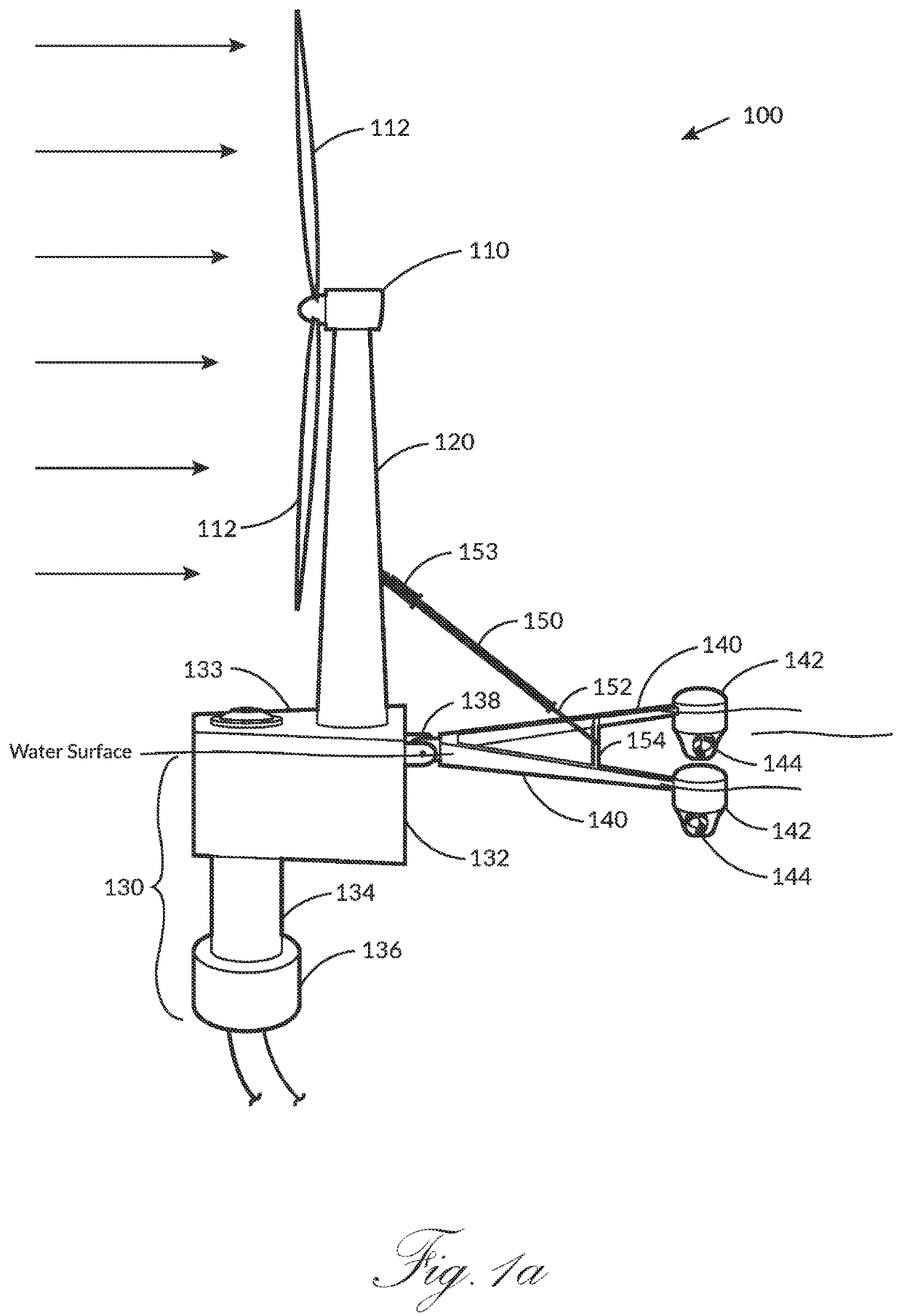Wind and wave desalination vessel
- Summary
- Abstract
- Description
- Claims
- Application Information
AI Technical Summary
Benefits of technology
Problems solved by technology
Method used
Image
Examples
Embodiment Construction
[0035]Preferred embodiments of the present invention and their advantages may be understood by referring to FIGS. 1-4, wherein like reference numerals refer to like elements. The present invention may be deployed in any water environment, preferably where one or more renewable energy sources are available. Pipeline connection to a shore-based water offtake infrastructure is required unless at-sea water delivery is available, for example, for a cruise ship water supply. Connection to an onshore electrical grid is optional.
[0036]The present invention provides a novel topology for integrating a desalination system with a renewable energy generator, such as a wind turbine on a tower mounted on top of a spar buoy. Compelling synergies result from this integration. Offshore wind turbines require high stability with minimum pitch, roll, and heave in response to sea states and must also be resistant to the wind's overturning force against the wind turbine's rotor and tower. Among other adva...
PUM
 Login to View More
Login to View More Abstract
Description
Claims
Application Information
 Login to View More
Login to View More - R&D
- Intellectual Property
- Life Sciences
- Materials
- Tech Scout
- Unparalleled Data Quality
- Higher Quality Content
- 60% Fewer Hallucinations
Browse by: Latest US Patents, China's latest patents, Technical Efficacy Thesaurus, Application Domain, Technology Topic, Popular Technical Reports.
© 2025 PatSnap. All rights reserved.Legal|Privacy policy|Modern Slavery Act Transparency Statement|Sitemap|About US| Contact US: help@patsnap.com



